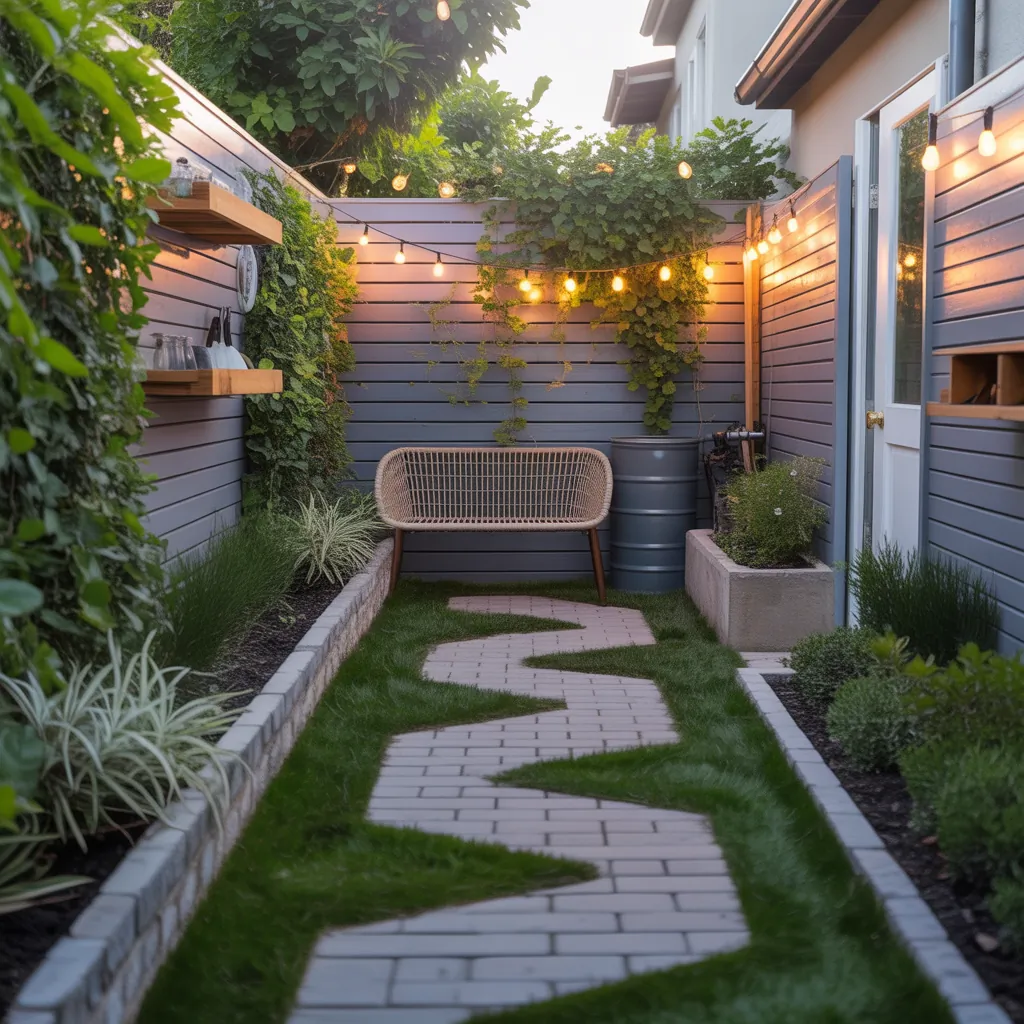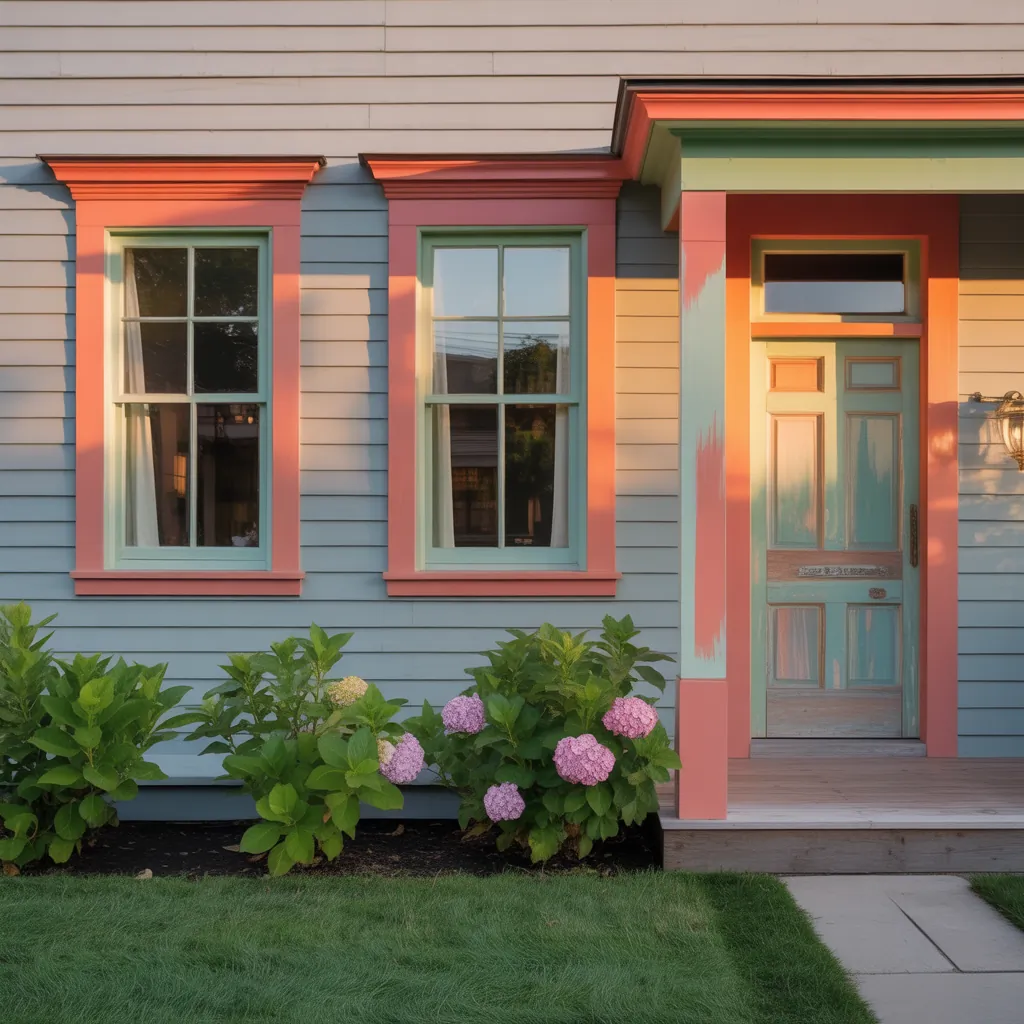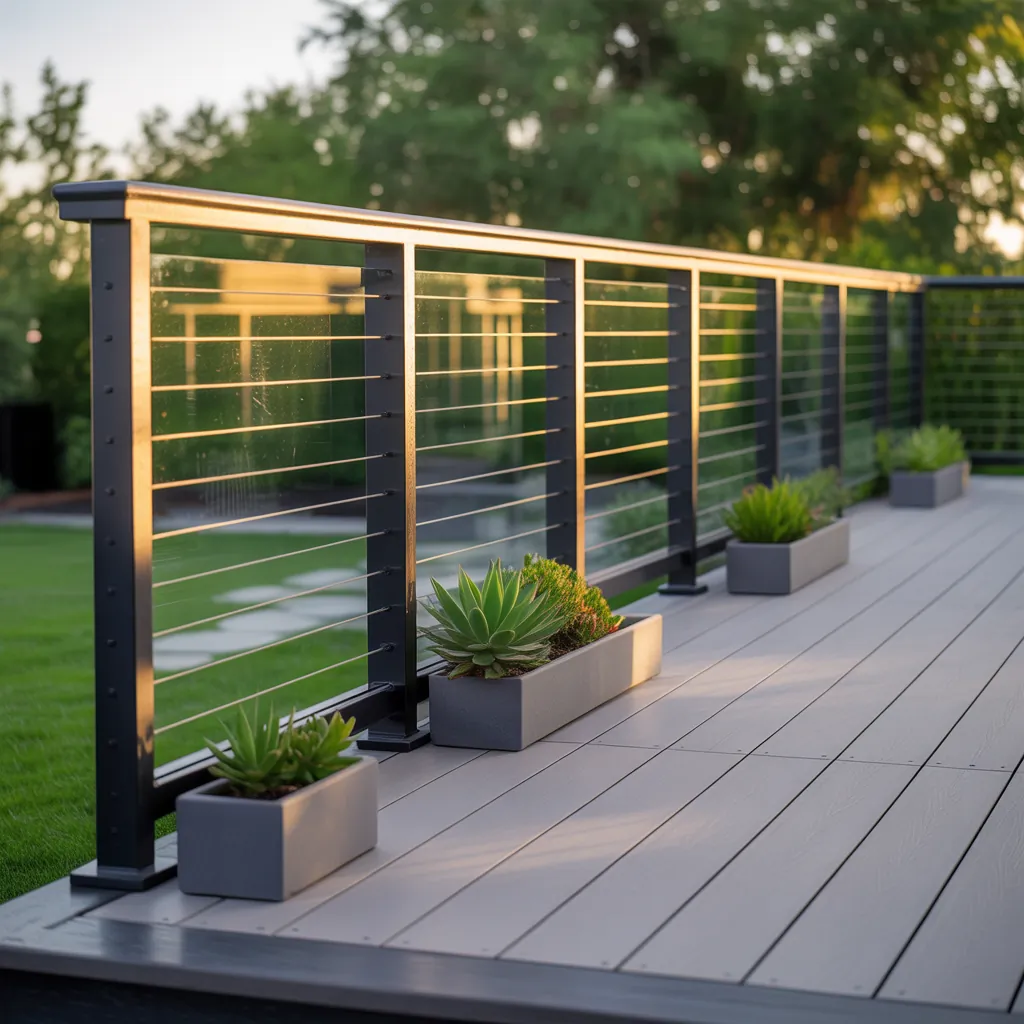Have you ever looked at the skinny alley between your house and the fence and wondered, “What can I do with this narrow, wasted space?” You’re not alone. Many homeowners face the challenge of making a small, narrow side yard both useful and beautiful. Whether it’s a shortcut, storage corridor, or neglected strip of dirt, this guide will help you reimagine that tight area with practical DIY solutions and stylish landscaping ideas.
Start with a Plan: Assess, Measure, and Prioritize
Before you grab a shovel, spend 30–60 minutes evaluating the area. Take measurements, note sunlight patterns, check for downspouts or underground utilities, and think about how you want to use the space—practical storage, a green buffer, or a quiet nook. Common long-tail searches like “small narrow side yard landscaping ideas” often start with this basic prep work.
- Measure width and length; note the narrowest point.
- Observe sun and shade throughout the day.
- Check drainage—water pooling means you’ll need permeable surfaces.
- Verify property lines and local permit requirements for structures.
Design ideas for small narrow side yard
Below are ten tested concepts—each suited to different widths and budgets. Pick one or combine a few for maximum impact.
1. Vertical Garden and Living Wall
When horizontal space is tight, go vertical. Install a modular living wall or hang staggered planter boxes on fence panels. Ideal for herbs, succulents, or trailing annuals, vertical planters add color without taking up the walkway.
2. Stepping Stone Path with Groundcover
Create a charming pathway using stepping stones set in low-growing groundcover like thyme or sedum. This softens the corridor and keeps it low-maintenance.
3. Narrow Bistro Nook
If you have 4–5 feet of width, place a narrow bistro table and foldable chairs. Add a slim bench along the wall, string lights overhead, and you’ve got an intimate outdoor spot for coffee.
4. Privacy Screen and Green Buffer
Use a lattice or bamboo screen with climbing vines (clematis, honeysuckle) for privacy from neighboring windows. This doubles as a noise buffer and vertical garden.
5. Storage Corridor with Hidden Cabinets
Turn the side yard into functional storage by installing lockable, weatherproof cabinets or shelving against the wall. Keep a narrow central walkway for access.
6. Gravel Path with Raised Planters
Gravel is a budget-friendly, permeable option. Add raised planter beds on one side for vegetables or pollinator-friendly flowers. This arrangement improves drainage and creates structure.
7. Low-Maintenance Xeriscape
For hot, dry climates choose drought-tolerant plants (lavender, rosemary, ornamental grasses) and mulch. Xeriscaping reduces water use and upkeep.
8. Decorative Lighting and Mirrors
String lights, wall-mounted lanterns, and weatherproof mirrors make a narrow space feel wider and cozier at night.
9. Small Water Feature
A slimline fountain or wall-mounted spout adds calming sound without requiring a large footprint—perfect for turning a passage into a retreat.
10. Pet Run or Utility Garden
If you need practical use, design the side yard as a durable pet run or an organized utility strip for trash and recycling bins, with screening to keep it tidy.
DIY Step-by-Step: Build a Simple Vertical Planter Wall
Here’s a quick project you can complete in a weekend with basic tools.
- Materials: cedar planks or pallet wood, landscape fabric, planter boxes or troughs, screws, wall anchors, potting mix, plants.
- Measure and mark where the planters will sit; space them for even watering and sunlight.
- Attach horizontal cleats (treated or cedar) to the wall to support planter boxes—use masonry anchors if attaching to brick or concrete.
- Line the back of each box with landscape fabric to retain soil while allowing drainage.
- Fill boxes with a lightweight potting mix and plant herbs, annuals, or succulents.
- Water deeply after planting and install a simple drip irrigation line if desired to reduce maintenance.
DIY tips: Pre-drill holes to prevent wood splitting, use rot-resistant materials, and stagger plant heights to create depth. For safety, check for electrical lines before drilling into walls.
Practical Tips and Real-World Advice
- Keep a 3-foot minimum clear path for comfortable access; narrower than 2.5 feet feels cramped.
- Choose permeable surfaces—gravel, stepping stones, or permeable pavers—to prevent runoff and avoid soggy spots.
- Match materials to your home’s style: modern homes pair well with concrete and slate; cottage homes look great with reclaimed wood and brick.
- Consider long-term maintenance—select plants suited to your hardiness zone and irrigation setup.
- Budget: small transformations can cost under $200 (gravel path, plants), while built-ins and lighting can run $1,000–$3,000 depending on materials.
Maintenance Checklist
- Prune climbing plants seasonally to avoid blocking the walkway.
- Refresh mulch or gravel annually to maintain clean lines.
- Check fasteners and screens for wear every 1–2 years.
- Clean portable seating and cushions as needed—store them in winter if moisture is an issue.
Frequently Asked Questions
How can I make a narrow side yard look bigger?
Use vertical elements like trellises and tall, narrow plants, add mirrors, and choose light-colored paving. Keeping the center path simple and uninterrupted visually stretches the space.
What plants work best in a small narrow side yard?
Choose plants based on light: shade-tolerant ferns and hostas for north-facing corridors; sun-loving herbs, lavender, and succulents for sunny south-facing strips. Opt for narrow or columnar varieties to save space.
Do I need a permit to build structures in my side yard?
Permit requirements vary by municipality. Small, non-permanent elements like planter boxes usually don’t need permits, but built structures, fencing over a certain height, or electrical work may. Check local regulations before starting major projects.
Conclusion: Start Small and Experiment
Your small narrow side yard is an opportunity, not a problem. With thoughtful design, practical DIY projects, and a few smart materials, you can turn that tight corridor into a functional garden path, cozy nook, or storage solution. Try one idea this weekend—maybe the vertical planter or a simple gravel path—and build from there. For more project inspiration and step-by-step guides, check out our DIY projects, explore indoor/outdoor synergy with kitchen upgrades, or refresh your whole property with curated home design ideas.
Ready to transform your side yard? Pick one idea from this post, measure your space, and take the first step—share your before-and-after and inspire other homeowners to rethink their narrow outdoor spaces.



